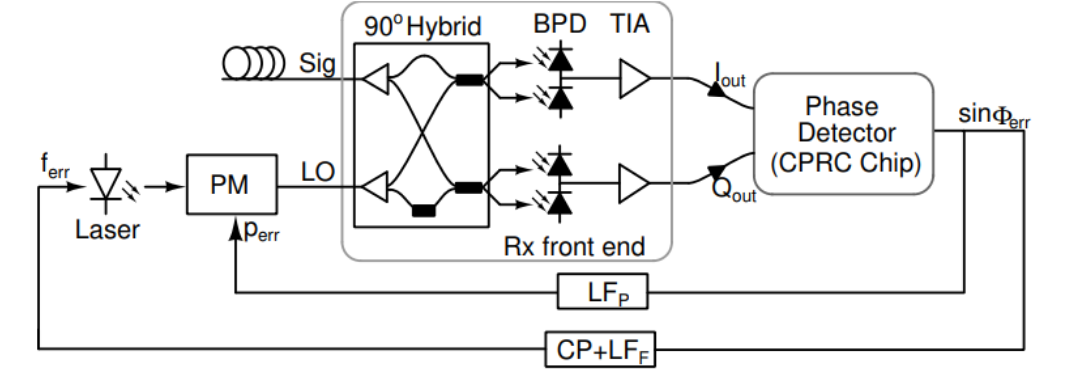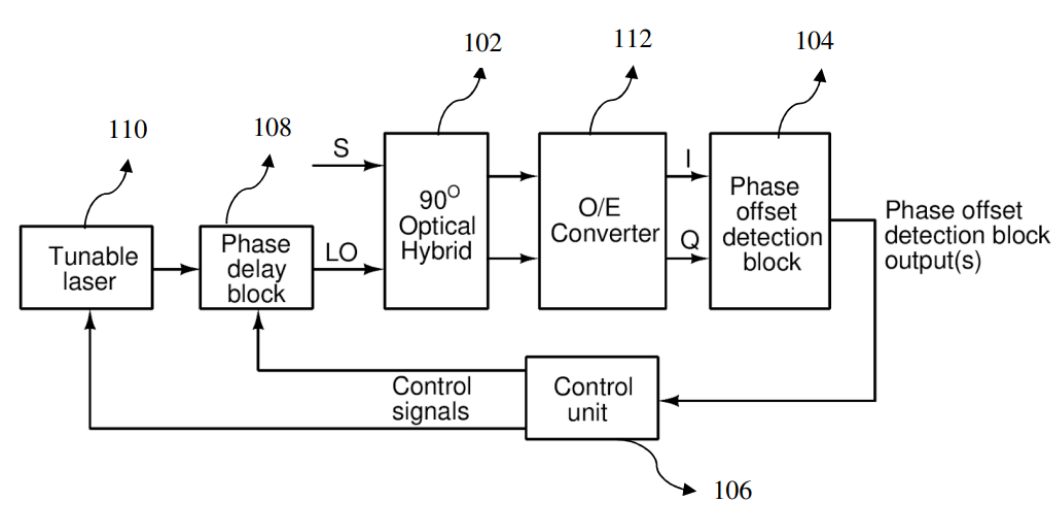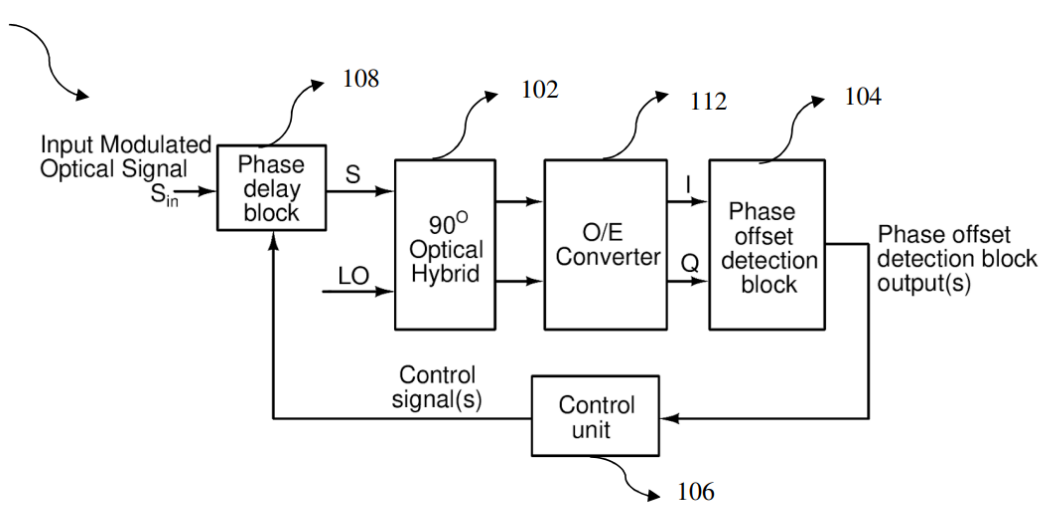This invention offers a low-power, feedback-based carrier phase recovery system for coherent optical receivers. Instead of using high-speed ADCs and DSPs, it employs an optical IQ modulator with a feedback loop for real-time phase synchronization. The system includes a 90° optical hybrid, carrier phase offset detector, control unit, and tunable phase delay in a closed loop. It supports advanced formats like QPSK and 16-QAM, enabling power-efficient, scalable optical interconnects for next-generation data centers and telecom networks.
Figure (1) The proposed Costas loop based carrier phase recovery and compensation module [PM: Phase Modulator; LFP: Loop Filter for phase correction; CP: Charge Pump, LFF: Loop filter for frequency correction; PD: Phase Detector, BPD: Balanced Photo-Detector, TIA: Transimpedance Amplifier]; (2) Configuration of a receiver of a coherent optical communication link; (3) Carrier phase recovery and compensation using phase delay block in the reference optical carrier’s path or modulated optical signal’s path
Existing coherent optical receivers consume excessive power due to their reliance on high-speed analog-to-digital converters and digital signal processing for carrier phase and frequency recovery. Traditional solutions like Costas loops are incompatible with higher-order modulation formats and require specialized, unstable laser sources. There is a need for a power-efficient carrier phase recovery and compensation technique suitable for advanced modulation schemes in high-speed data center interconnects.
- Low-Power CPRC without DSP: The invention achieves carrier phase recovery and compensation without using power-hungry ADCs or DSP blocks.
- Closed-Loop Feedback Control: The system utilizes a feedback loop with phase detection and tuning blocks to dynamically synchronize carrier phase.
- Supports Advanced Modulation Formats: The design is compatible with high-order formats like QPSK and 16-QAM for high-speed data communication.
- Endless Optical Phase Tuning: The technology employs an optical IQ modulator to provide a continuously tunable phase shift in the optical domain.
- Efficient Electronic Control Signals: Phase tuning is driven by signals generated using lookup tables or signal integration methods.
- Reduces BER and Hardware Cost: The system operates with standard lasers, reducing bit-error rates and avoiding expensive tunable lasers.
- Hardware-Friendly Architecture: The design is simplified to allow integration into compact, low-power hardware modules.
The prototype receiver system includes key integrated modules for coherent optical communication. The optical front end has a 90° optical hybrid that mixes a reference carrier and modulated data signal for phase comparison. A carrier phase offset detector identifies the phase difference, sending this to an electronic control unit that generates control signals. These drive a tunable phase delay block with an optical IQ modulator, adjusting the signal phase in real-time via a closed feedback loop. The system supports multiple formats like QPSK and 16-QAM and uses electronic circuits with lookup tables for phase control, enabling low-power, high-speed data reception without power-hungry DSP blocks.
It has been licensed to a startup that is trying to make a commercial product out of it.
4
The invention advances energy-efficient, high-speed optical communication systems vital for modern data centers and the internet. It reduces power consumption in coherent optical receivers, lowering the carbon footprint and promoting greener IT ecosystems. Supporting higher data rates without extra power enables affordable, scalable connectivity, boosting technological inclusion and economic growth in underserved areas.
- Data centers and cloud computing infrastructure
- High-speed interconnects for enterprise and HPC (high-performance computing) systems
- Telecommunication backbone and metro networks
- Next-generation optical transceivers for IoT and AI/ML workloads
- Low-power optical networks for smart cities and industrial IoT
- Satellite communication and aerospace
Geography of IP
Type of IP
16/681,977
11128383



